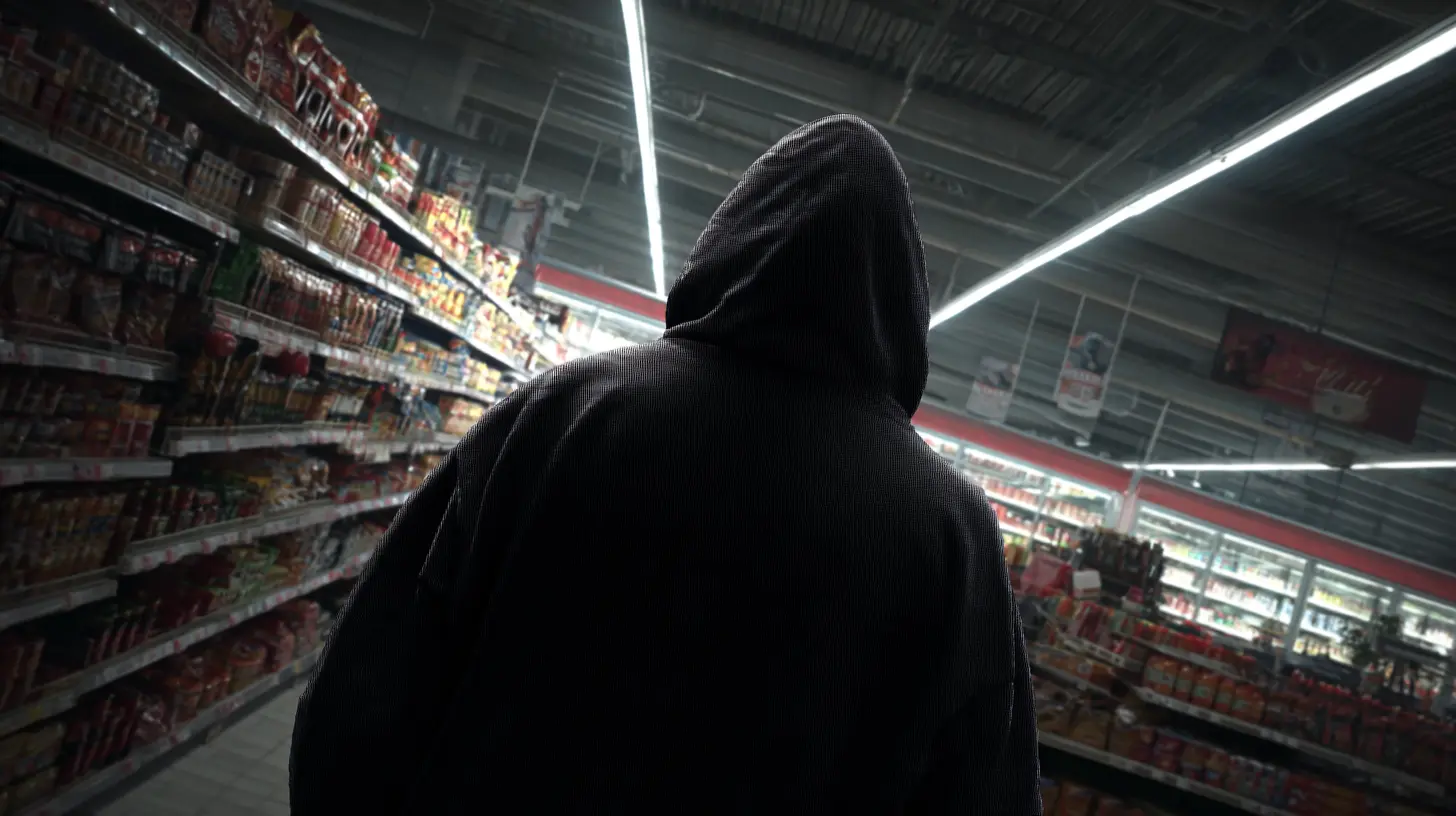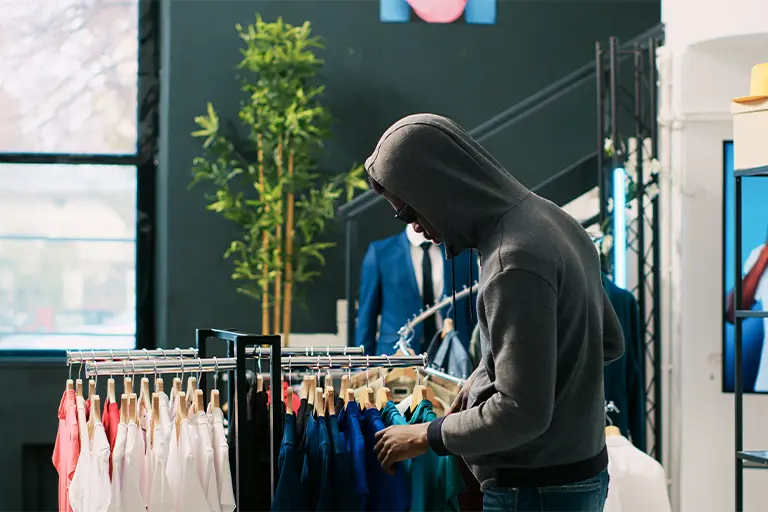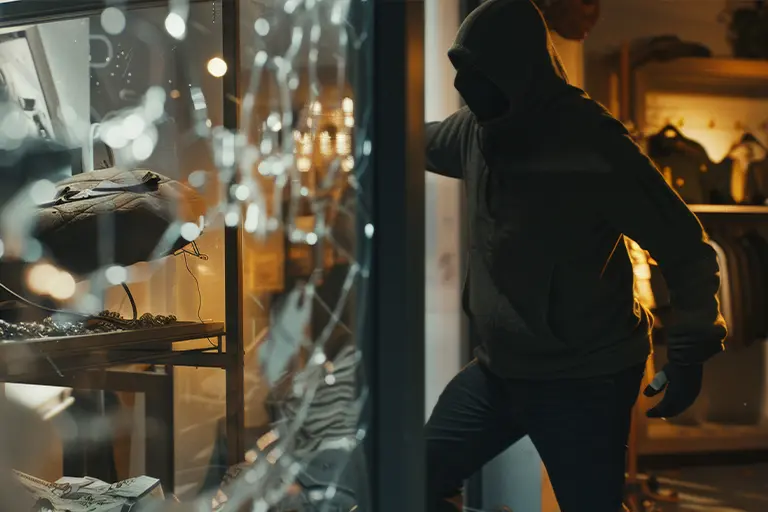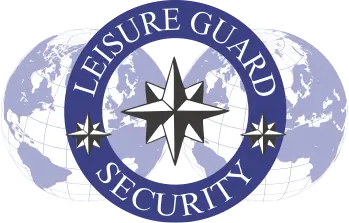Retail crime is evolving, is your Retail Security evolving with it?
Shoplifting, break-ins, refund fraud, and organised criminal gangs are now part of the daily landscape for UK retailers. For store owners and area managers, securing stock and staff isn’t just about having CCTV or locking the doors at night, it’s about creating layers of protection that reinforce each other.
In this article, we’ll show you how to build your Retail Security Ladder, a step-by-step framework that protects your business from the outside in. You’ll learn what each layer is for, how to implement it, and how to spot the missing links in your current setup.
🔐 Why Layered Security Matters in Retail
A single security measure, no matter how strong, can always be bypassed. But layered security, also called defence-in-depth, creates multiple barriers that work together. If one fails or is compromised, the next one is already in place.
This approach:
- Reduces the risk of loss or damage
- Slows down would-be criminals
- Deters opportunistic theft
- Supports better insurance compliance
- Protects your staff and your brand reputation
Let’s build it, one step at a time.


The first line of defence isn’t your door; it’s everything around it. Perimeter security sets the tone for how vulnerable your business looks. If a criminal thinks your store looks easy, it becomes a target.
Common Weak Points:
- Dark rear entrances or alleyways
- No visible signage or CCTV deterrent
- Vulnerable window displays
Key Measures:
- CCTV facing all approach angles
- Security lighting with motion sensors
- Steel shutters or anti-ram bollards
- “Monitored Security” warning signage
- Glass protection film or reinforced glazing
Tip: Clean, visible CCTV cameras are not just for evidence, they’re for deterrence. Mount them prominently and pair with clear signage.

Once someone reaches your front or back door, what’s stopping them from walking in, legitimately or otherwise? This layer manages both secure access and out-of-hours protection.
Common Risks:
- Poor-quality locks or doors
- Doors left open during deliveries
- No alarms triggered on forced entry
Recommended Solutions:
- High-security locks or smart locking systems
- Monitored alarm systems with police response
- Access control for back rooms or side entrances
- Timed door buzzers for staff-only areas
- Door-viewing cameras or two-way audio
Read our article: The Silent Guardian: How One Retail Security Officer Prevented a Christmas Crime Spree
Internal retail Security

This is the heart of your business, and the most common stage for theft and conflict. It’s where security must balance protection with customer experience.
Threats to Tackle:
- Shoplifting
- Refund scams
- Aggressive customers
- Group distractions
Security Enhancements:
- Trained security officers positioned visibly
- Body-worn cameras for guards or key staff
- Anti-theft signage and mirror placements
- EAS tag systems (electronic article surveillance)
- Customer service training to deter thieves with engagement
Note: A visible guard near the entrance provides more than deterrence. They also offer help, reduce anti-social behaviour, and respond to emergencies faster than CCTV.

Security isn’t just about outsiders. Internal theft is one of the most common and costly threats in retail. Many retailers overlook staff zones, leaving stock vulnerable once past the shop floor.
Common Gaps:
- Unrestricted staff access to all areas
- Unmonitored changing or break rooms
- No logs for who enters or exits sensitive zones
Fixes and Improvements:
- Keycard/fob systems to restrict movement
- Internal CCTV (clearly signed and lawful)
- Staff lockers for personal items and devices
- Policies on bag checks or off-limits areas
- Audit trails for stock movement or adjustments
🧱 Level 5: Stockroom & High-Value Asset Protection
This is your vault. Yet in many retail environments, the stockroom is alarmingly vulnerable, unlocked, unmonitored, and unsupervised.
Major Risks:
- Organised criminal targeting
- Insider theft or reselling
- Faked delivery paperwork or supplier fraud
Best Practice Measures:
- Locked cages or secure cabinets for high-value items
- Motion-triggered cameras with alerts
- Manual stock checks at opening and closing
- Delivery verification protocols (e.g. driver photo ID, signature matching)
- Double-person rules for access
| Security Layer | Main Threat Addressed | Protection Type |
|---|---|---|
| Perimeter | Break-ins, Vandalism | Visual + Physical |
| Entry Points | Forced Entry, Tailgating | Alarmed + Restricted |
| Shop Floor | Shoplifting, Customer Threats | Human + Visual |
| Staff Zones | Internal Theft, Tampering | Restricted Access |
| Stockroom | Organised Theft, Loss | Locked + Monitored |
Is your retail security missing a step?
Book a free site assessment today and let us help you build a layered defence that protects your staff, your stock, and your store’s future.
Retail Security Is an Investment, Not a Cost
Security in retail is often treated like a necessary evil, an overhead to reduce, rather than a strategic tool for growth and protection. But that mindset is precisely what leaves stores vulnerable to theft, fraud, and disruption. The truth is simple: security doesn’t drain your profits, it protects them.
Every pound invested in professional retail security is a commitment to continuity, reputation, and peace of mind. It protects your stock. It keeps staff safe. It prevents losses that insurance won’t always cover. And most importantly, it sends a powerful message to thieves: this store is protected.
Just as visual merchandising drives sales, security protects those gains. Overlook it, and you expose every item, every shift, and every staff member to unnecessary risk. Prioritise it, and you safeguard the one thing that keeps retail thriving: confidence.
When retailers treat security as an afterthought, or worse, an optional extra, they risk:
Unrecoverable losses from theft or refund fraud
Employee fear or dissatisfaction
Repeated targeting by organised shoplifters
Insurance claim issues due to compliance failures
Long-term damage to customer trust and brand reputation
Now flip the mindset:
Retailers who invest in layered, proactive protection gain:
✅ Lower shrinkage and loss rates
✅ Safer, more confident staff
✅ Stronger relationships with insurers
✅ Fewer interruptions to trading
✅ Higher customer satisfaction and retention
✅ A visible, professional brand presence
Read out article: How to prevent shoplifting in supermarkets
The Psychology of Site Crime
Professional thieves’ case a site like any other target. Here’s what they look for:
Green Flags for Criminals:
- Unattended entrances or side access
- No lighting or cameras in place
- Unsecured store rooms
- No visible patrols or alarms
- Predictable working hours and shutdown routines
Red Flags (That Deter Theft):
- CCTV with visible signage
- Manned guards in hi-vis vests.
- Motion-activated cameras
- Locked display cabinets
- Security signage
Thieves don’t want resistance. They want opportunity. Your store design either invites them in or tells them to walk away.
Is your retail security missing a step?
Book a free site assessment today and let us help you build a layered defence that protects your staff, your stock, and your store’s future.
Retail Security FAQs
What is the Retail Security Ladder?
The Retail Security Ladder is a layered approach to securing retail premises. It breaks down security into five strategic levels: perimeter, entry points, shop floor, staff-only zones, and stockroom. Each layer reinforces the next to create comprehensive protection.
Why is a layered approach to retail security better than just CCTV?
CCTV is useful for evidence after an incident — but layered security actively deters, delays, and prevents crime in real-time. If one layer fails, the next is already in place to protect your business.
How do I know if my retail store is under-protected?
Common signs include recurring theft, poor staff awareness, blind spots, unsecured access points, and outdated or inactive alarm systems. A professional site audit can quickly identify your weakest areas.
What does each layer of the ladder protect against?
Perimeter: Break-ins, vandalism, fly-tipping
Entry Points: Forced access, tailgating, alarm bypass
Shop Floor: Shoplifting, aggression, refund fraud
Staff Areas: Insider theft, stock tampering
Stockroom: High-value theft, organised crime
Does adding more layers mean spending a lot more money?
Not necessarily. Many layers involve training, signage, or improved procedures, not just tech or guards. It’s about smart placement of budget, not more budget.
How often should retail security be reviewed?
We recommend a review every 12 months, or sooner after a major incident, staff turnover, new stock types, or changes to opening hours.
Is retail security different for high-end stores vs budget retailers?
Yes. High-end stores may require stronger stockroom security, covert surveillance, or plainclothes officers. Budget stores often need visible deterrents and conflict resolution training. The principle of layering applies to both.
What legal requirements are there for shop security in the UK?
While there’s no law that says you must have CCTV or a guard, employers must meet duties under the Health & Safety at Work Act. This includes protecting staff from violence and maintaining a safe environment.
What if I already have a CCTV and alarm system?
That’s a great start — but not enough on its own. Criminals know how to avoid or disable basic setups. We look at how well your systems work with people, processes, and physical barriers to build full coverage.
How can I stop internal theft without damaging staff morale?
Transparency and training are key. Use locked access, audit trails, and spot checks without accusing anyone. Many employees welcome strong systems — it shows fairness and professionalism.
Is layered security required for insurance purposes?
Many insurers now expect more than just CCTV. Regular patrols, alarm response contracts, and inventory control can impact premiums and claims. We work with you to meet these expectations.
Can I still implement the Retail Security Ladder if I only have one or two staff members?
Yes. Layers like signage, smart locks, lone worker devices, and inventory checks don’t require large teams. It’s about using the right tools for your setup.
What are the first three actions I should take if I want to improve my store’s security?
Assess your perimeter and access points
Train staff on basic theft prevention and safety
Speak to a professional about layering solutions across your store



